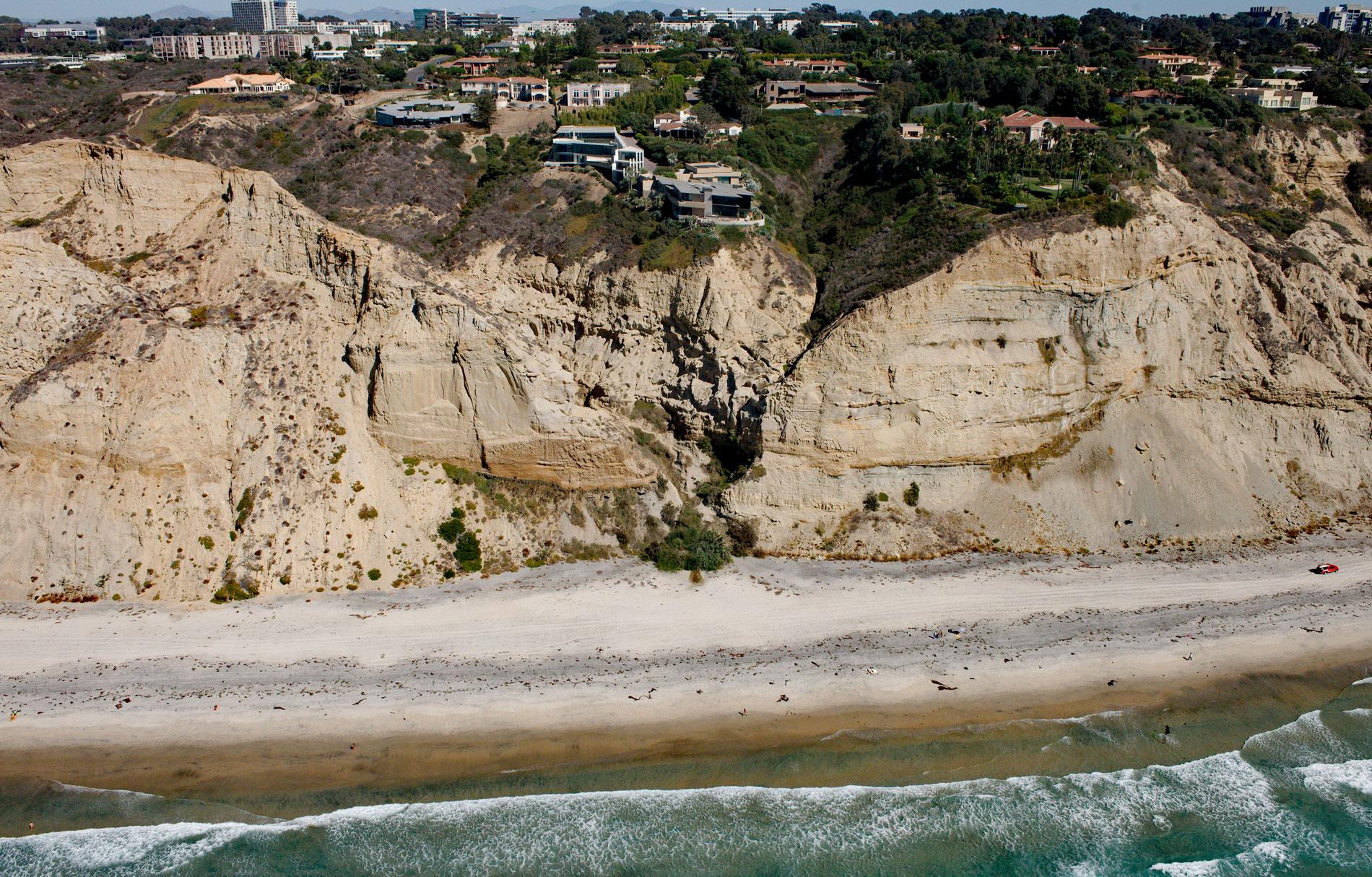Black’s Beach is the secluded southern section of Torrey Pines State Beach, which starts at the mouth of Los Peñasquitos Lagoon to the north and extends south for about 4.5 miles (7.2 km) to Scripps Beach, about 10 miles (16 km) south of Encinitas and 4 miles (6.5 km) north-northeast of La Jolla, California. The area is named after the endangered subspecies of Torrey Pine found only on the small coastal strips north and south of Torrey Pines State Beach. The northern portion of Black’s Beach is owned and managed by the California Department of Parks and Recreation as a clothing-optional beach, while the southern portion of the beach, officially known as Torrey Pines City Beach, is jointly owned by the city of San Diego and the state park, but is managed by the city of San Diego. Black’s Beach was named for the Black family who owned the land overlooking the beach.
In 1769, when the Spanish entered Alta California to establish a permanent settlement, the population of Indigenous Kumeyaay people was about 10,000 and their traditional territory extended for about 50 miles (80 km) north and south of the present border between Mexico and California, and from the coast to the crest of interior mountains. In 1821, following the Mexican War of Independence, the area was mapped as pueblo land and contained about 60 lots. In the late 1930s, William H. Black, and his wife Ruth F. Black, moved to the La Jolla area and became friends with Fred Scripps who owned a large tract of ocean-side land known as the Scripps Biological Cliffs. The property at that time was completely undeveloped and Scripps used it primarily as his private hunting reserve. The parcel came on the market in 1947, and the Blacks paid cash for the 248 acres (100 ha) that encompassed the bulk of San Diego Pueblo Lots 1312 and 1313. The property was renamed ‘La Jolla Farms‘ and developed as a horse ranch. In 1949, the Blacks subdivided the property into four or five residential lots that were offered exclusively to friends and acquaintances, some of whom built homes at the dramatic edge of the plateau overlooking the beach.
The San Diego region is located on the tectonic boundary between the North America Plate and the Pacific Plate. The area is geologically active with steep coastal topography and a narrow continental shelf. Most of the coast is characterized by relatively narrow beaches backed by sea cliffs that show horizontally stratified sedimentary rocks that developed during the Cretaceous period. The rocks are composed of a wide range of materials from mudstones and shales to lithified sandstones and contain various lenses of boulders, cobbles, and shells. The beaches are composed of these sediments but sorted by the moderate to high energy wave action leaving a veneer of sand 6-10 feet (2-3 m) thick in most places overlaying cobbles on a bedrock terrace. A wide sandy beach absorbs wave energy impinging on it and forms a natural barrier under most conditions to wave attack of the upland. If sand supplies are inadequate to provide a sufficiently wide beach to dissipate all the available wave energy, the waves will strike the sea cliffs directly. Local rivers have historically been the main source of sand for the beaches in the region. Flood control and water supply dams constructed since the 1930s on all the major watersheds in the San Diego region have had a detrimental impact on sand availability to the coast. Sea cliff erosion at Torrey Pines is now estimated at 0.6 feet (17 cm) per year, which potentially threatens the homes built on the edge of the plateau. Read more here and here. Explore more of Black’s Beach and Torrey Pines here:

